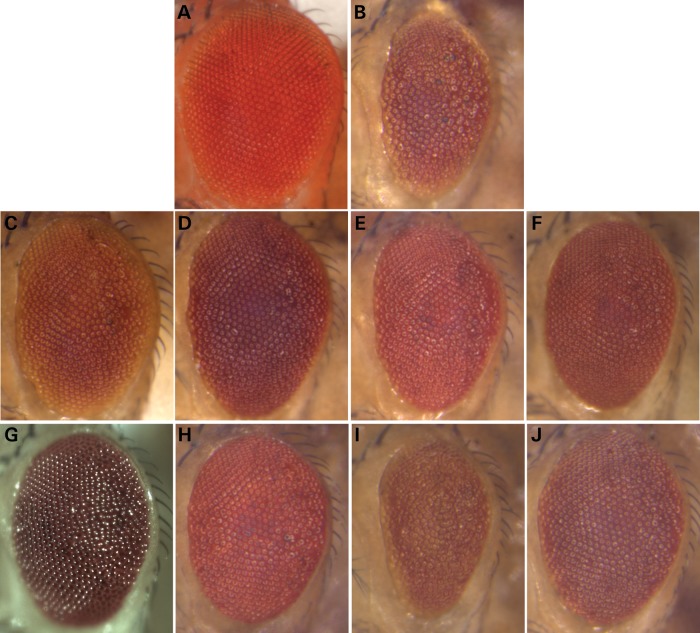Figure 2.
Activating AD candidate genes modifies Tau toxicity in Drosophila. Compared with control animals (A, GMR-Gal4/+), expression of human Tau generates a reduced eye size and moderate roughened appearance (B, UAS-TauV337M/+; GMR-Gal4/+). Lines predicted to activate expression of candidate genes were suppressors of the Tau rough eye: Lar (C,UAS-TauV337M/+; GMR-Gal4/UAS-Lar); Fit2 (D, UAS-TauV337M/+; GMR-Gal4/+; Fit2EY08530); Fit1 (E, UAS-TauV337M/+; GMR-Gal4/UAS-Fit1); oxt (F, UAS-TauV337M/+; GMR-Gal4/+; oxtEPG4946/+); SmB (G, UAS-TauV337M/+; GMR-Gal4/+; UAS-SmB/+) and aret (H, UAS-TauV337M/+; GMR-Gal4/+; UAS-aret/+). Two different lines predicted to activate expression of scb either enhanced (I, UAS-TauV337M/+; GMR-Gal4/UAS-scbVolL) or suppressed (J, UAS-TauV337M/+; GMR-Gal4/scbEY10270) Tau toxicity, and consistent results were seen with the independent lines scbEY02806and UAS-scbVolL(III), respectively. All modifier effects were scored using a semi-quantitative rating scale and found to be significantly different (P < 0.001) from controls, using pairwise independent sample t-tests (Supplementary Material, Fig. S1). Activating lines used in the screen were obtained from publicly available collections (28) or were requested from other Drosophila laboratories (45–48); the UAS-Fit1 transgenic line was generated de novo (see Materials and Methods).

